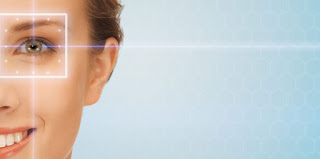Why is femtosecond laser assisted cataract surgery more beneficial?
Femtosecond laser assisted cataract surgery is an
advanced surgery that works on femtosecond technology that gives high precision
and accuracy in cataract surgery. Traditionally, this surgery is performed with
hand-held surgical tools.
Let’s discuss steps of
femtosecond technology
The corneal incision
In every cataract surgery, an incision is made on
the cornea to gain access to the interior of the eye and implant an intraocular
lens. Traditionally, the incision is made with a handheld tool with a sharp
metal or diamond blade. In femtosecond technology, the surgeon prepares a plan
for making an incision on the cornea.
A sophisticated 3-D image called optical coherence
tomography of the eye is created and an incision on the right location and
right depth and length is made using femtosecond laser. The precision and
accuracy of the incision improves self-healing with lesser chances of
infection.
The capsulotomy
The natural lens of the eye is surrounded by a clear
and very thin film called capsule. In cataract surgery, the front portion of
the capsule is removed to access the cloudy lens. But care has to be taken with
the capsule because it is the film that has to keep the replaced lens at its
place throughout the patient’s life.
Traditionally, the capsule is removed by making an
opening with needle but in femtosecond technology, the surgery is performed
with a laser. And studies have proved that laser capsulotomies allow better
centering and placement of the IOL. It is a significant factor in improving the
visual outcome of the surgery.
Lens and cataract
fragmentation
After capsulotomy, the final step is removing the
cataract. Traditionally, the cataract removal is done with the help of an
ultrasonic device. This device breaks up the cataract but it requires more
energy to break the cloudy lens. And high buildup of energy could lead burning
of the incision and impacting the visual outcome.
When done with laser, the process of cataract
removal becomes a hassle-free affair. Laser softens the cataract before
breaking the cloudy lens into pieces. Finally, the soft pieces are easily
removed from the eye. Another advantage of laser assisted surgery is that it
reduces the risk of damage to capsule.
Conclusion



Comments
Post a Comment